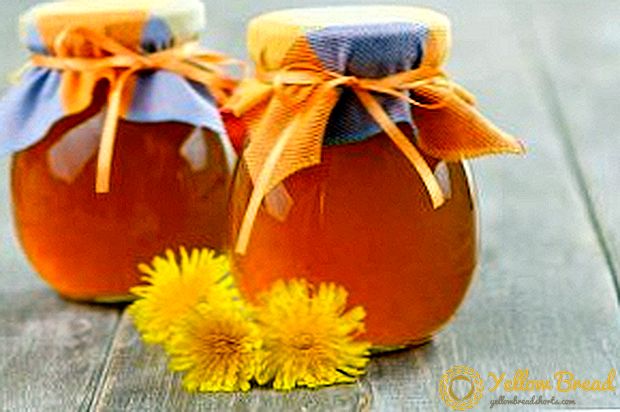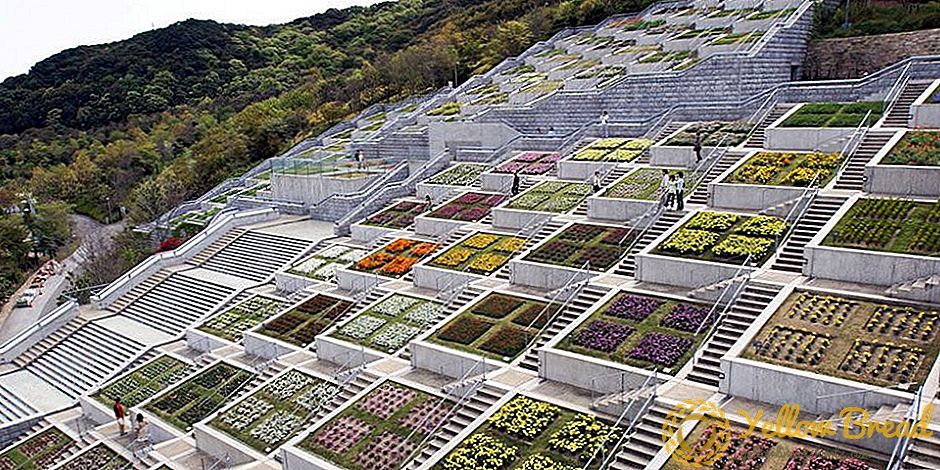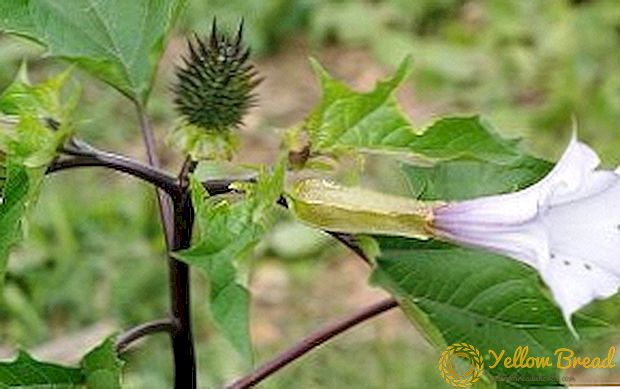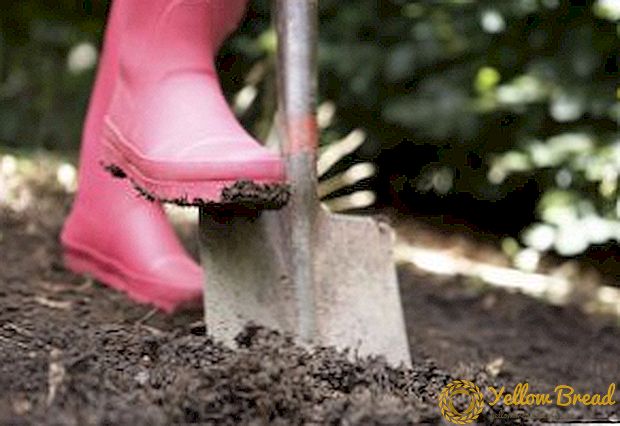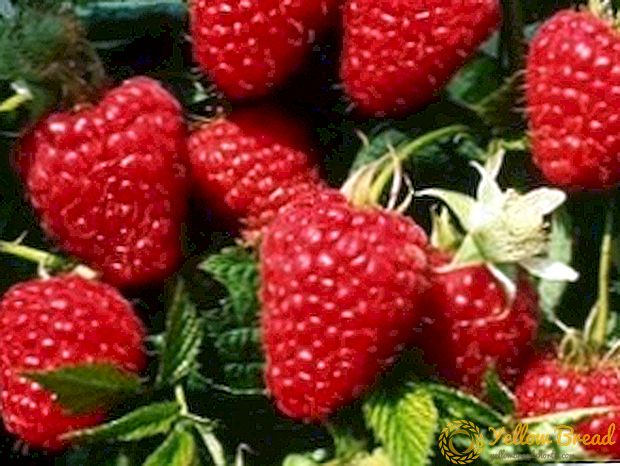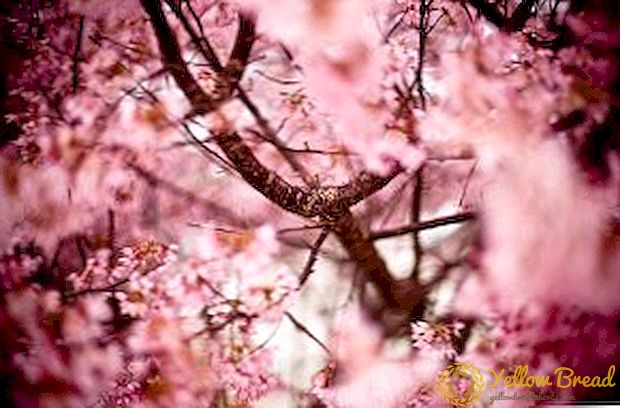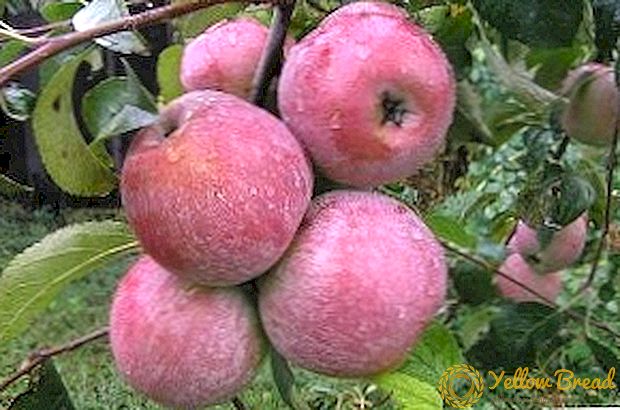
If you want to have a winter variety of apples in your garden that will be good not only in appearance but also in taste, and at the same time have other positive characteristics, then you should pay attention to the Welsey variety.
Let's talk about it in more detail.
- Description of the variety
- Landing. Timing.
- Apple care
- Pests. Disease.
Description of the variety
It is unlikely that you have never seen this beautiful apple, which attracts with its appearance and simply “asks” to your table, in a fruit basket. Fetus has a beautiful rich red, one can even say, a crimson color, but there are also less bright fruits, and then a yellow-green color with a light blush appears to the foreground.
The shape of the apple is round, but slightly flattened in the direction of the oblongness, the weight can reach 150 grams. It has a delicate aroma, juicy flesh and a sour-sweet taste.
The skin of the fruit is not thick, and the seed chambers are small. I have no doubt that the look of this apple makes you want to try it. The removal time depends on the weather conditions and the region (mainly the second half of September or the beginning of October).
Concerning wood, it does not differ in large size. Initially it has a pyramidal crown, and later it starts to show roundness. The branches of the tree look upwards, forming an acute angle, which is not very good, because with a bountiful harvest, this often leads to their breaking off. But the tips of the branches slightly down and have a drooping appearance.
Shoots not thick, brown in color, with slight pubescence. The leaves have wavy edges and curl at the very top. At the same time have a visible shine on a background of dark green. Their location in relation to the escape is almost 90º. During the flowering period, the tree is pleasing to the eye with beautiful pink and white buds, of which later flowers of medium size appear with the same color.

"Pros" This variety are:
-steeriness (the first fruits can be expected already in the fourth year);
-the appearance and size of the fruit, their attractiveness as a product;
- it is not necessary to wait for the ripening of the fruit, they can be consumed immediately after removal;
- rather high productivity of a grade (to 200 kg);
- comparatively long shelf life (higher than that of the famous Antonovka, and in January you can still enjoy the taste of these apples);
- resistance to diseases, especially to scab;
- although, and low, but still, the average resistance to frost (in many varieties it is much lower).
It is the last two points that have favorably distinguished this variety in the eyes of breeders, and it became the original form for the birth of many well-known varieties, and there are about thirty of them.
"Negatives" can be called the fact that the fruits have a tendency to fall early and if you overlook, you can lose a significant part of the crop; decrease [/ size of the fruit with a good yield.
One more feature This variety, which allows him to replenish exactly the subclause with flaws, is the variability of fruit taste, depending on the weather. If the summer was too rainy and cold, then it will certainly affect the taste of the apple for the worse.
Landing. Timing.
With a high level of groundwater occurrence, preference should be given to the first (dwarf), otherwise the tree will be subjected to waterlogging. Of course, in this case the tree will not be distinguished by high yields and longevity. If the water level is somewhere at a depth of 2.5 m, then a semi-dwarf stock will suit.
This tree will live for more than 40 years, but, unfortunately, its yield will also not reach its maximum performance. And only the occurrence of water at a depth of three meters or more allows you to use any stock, even if it has a strong root system.
It cannot be said that there are any special secrets that need to be used when planting and caring for this variety. Like any other apple tree, Welsey should be planted in late autumn or at the very beginning of spring.
Location the apple tree Welsey prefers lit, but without the scorching sun, otherwise the tree risks getting burned. Nearby it is recommended to plant apple pollinators, then the harvest will be much higher. For this good varieties such as Macintosh and Antonovka.
The soil should be loamy and sandy. As with other apple varieties, good air permeability is a must. To do this, it is subjected to the necessary adjustment, with the introduction of all necessary (peat, sand, etc.e.), depending on the needs.
Landing conditions the same as when planting any apple trees. Pit 70 cm (depth) per 100 cm (diameter). Separate the fertile and subsequent layers, so as not to mix.
In the center we make a hillock from the fertile layer, add humus and superphosphate, mix, you can add ash. Be sure to put a peg in the pit, to which we tie up our seedling. Densely trample down the earth and water until water is absorbed. Peat around the pee.

Apple care
As well as planting, this stage does not differ from the general principles of caring for other apples. Watering depends on the weather. Under dry conditions, water at least once a week and a half. A young tree needs an amount of water, which will be about twenty-five liters.
It is worth recalling the benefits of watering the entire tree, including the branches. This will be an additional way to control pests, and in general will have a beneficial effect on the plant. Just do not forget that this should be done in the evening, so as not to harm the seedling and avoid sunburn.
Do not forget about such an important stage as soil loosening. Especially the tree needs it after heavy and long precipitation. Therefore, with care, not penetrating deeply, forks are punctured. Such a procedure will increase air access to the root system and will benefit your apple tree.
Pruning is also necessary. At an early age, the nature of the fruiting of this variety is lateral. There is always the danger of overloading branches with fruits. As it ages, the tree goes to the ringed type of fruiting and a problem such as periodicity appears. Anti-aging pruning helps to slightly correct this disadvantage.
Fertilize and feed the tree is necessary in several stages. Before the tree "woke up", during flowering and after it. The plant needs both organic fertilizers and microelements. As you know, apple trees are well tolerated and love urea solution. And it can be used as a foliar application, in the form of spraying.
But remember that it is important to properly dilute this substance with enough water. The older the tree, the more concentration it can transfer, but, nevertheless, it is useful to test the solution on a separate branch, and observe its reaction for two days.
Effectively also the use of wood ash and mullein spraying. Many gardeners have resorted to summer feeding. During this period, nitrogen-containing substances rich in phosphorus and potassium are introduced.
Winter is not so bad for this variety of apple trees, but since winter hardiness is characterized as average, lowering the temperature below -25º can have a detrimental effect on the tree. Therefore, the seedling is best tied with spruce branches and around the trunk to mulch with manure. An adult tree will not interfere with warming with burlap.
Pests. Disease.
Among the diseases that gardeners usually fear, in the first place is scab. And here you can breathe a sigh of relief, since we have already said that this variety is precisely because of its resistance to this disease, which breeders use to transfer this feature to new varieties.
But there are other diseases and pests that can cause significant damage to the tree, especially if other fruit trees grow nearby.

Recall what aboutmajor illnessesThe most common are: fruit rot, powdery mildew, cytosporosis. And among pestsThe most common are: hawthorn and codling moth. With all these ailments you need to deal with spraying. There are many drugs that are susceptible to certain pathogens.
the main thing - adhere to the rules of their use and do not forget about the general rules that relate to spraying. In addition, it is important to take care of the garden in the autumn, raking and burning dry leaves, in which many pests often try to hide in the winter.
In general, if you follow the most basic rules for caring for plants and surround them with care and love, then you can always count on their reciprocity, in the form of a good harvest, whether it is an Apple tree of Welsey or any other, and we wish you success in this.

